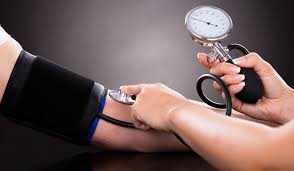Source: theweek.in
According to the World Health Organisation (WHO), worldwide, raised blood pressure is estimated to cause over nine million deaths every year.
The prevalence of hypertension (HTN), more commonly known as high BP, is seeing a steep rise among Indians—in both rural and urban areas—for a variety of reasons. According to a recent study, there is a high prevalence of masked hypertension (difference in the readings of blood pressure at home and at clinic/office) and white-coat hypertension (a syndrome whereby a patient’s feeling of anxiety in a medical environment results in an abnormally high reading when their blood pressure is measured) in Indians. The study also found that Indians have a higher average resting heart rate of 80 beats per minute, higher than the desired rate of 72 beats per minute.
Commissioned by Eris Lifesciences, The India Heart Study has been conducted under the aegis of Batra Hospital and Medical Research Centre. It found that of the 1,643 participants studied in Mumbai, 15.4 per cent of the respondents were oblivious of their high blood pressure levels (masked hypertension) and 22.8 per cent of respondents were found to have white-coat hypertension and were misdiagnosed. Another striking finding of the study is that unlike other countries, Indians seem to have higher blood pressure in the evenings than in mornings.
This, suggest experts, should make doctors rethink the time advised for anti-hypertensive drug dosage. Dr. Upendra Kaul, cardiologist, chairman and dean of Academics and Research of BHMRC, who was the principal investigator of the study, said, “India Heart Study points to a need for better clinical management of hypertension in India. This is India-specific data and should help shape the best practices for the diagnosis of high blood pressure among Indians. The study presents exhaustive data on the various aspects of hypertension.” Masked Hypertension, if undetected, is a dangerous phenomenon. It is important to monitor one’s blood pressure, beyond the clinic, even at home, according to prescribed guidelines. Because accurate diagnosis of hypertension is important to fight against the disease and improve health outcomes.
The study was conducted on ‘drug-naive’ set of participants, using a comprehensive process of taking blood pressure readings. The investigators examined the blood pressure of 18,918 participants (male and female) through 1,233 doctors across 15 states over a period of nine months and their blood pressure was monitored at home for four times in a day during seven consecutive days.
Throwing light on the study, Dr. Willem Verberk, PhD., Cardiovascular Research Institute Maastricht (CARIM), and a key investigator, said, “For the ‘correct’ detection of hypertension, home blood pressure monitoring is advised. However, different patients may have different co-morbidities, like diabetes, which makes the use of validated devices for home blood pressure monitoring important and needs to be validated separately for pregnant women, adolescents and people with kidney disorders.”
White-coat hypertensives, who are misdiagnosed and put on anti-hypertensives, have to take unnecessary medication. There is also a risk of hypotension (low blood pressure, less than 90/60) in such persons. On the other hand, a masked hypertensive may go undiagnosed running the risk of complications for heart, kidney, and brain, leading to premature mortality. “High blood pressure affects multiple organs in the body, including the kidneys. Uncontrolled high blood pressure can lead to Chronic Kidney Disease which complicates disease management,” added Dr. Prashant Rajput, a renowned Nephrologist.
